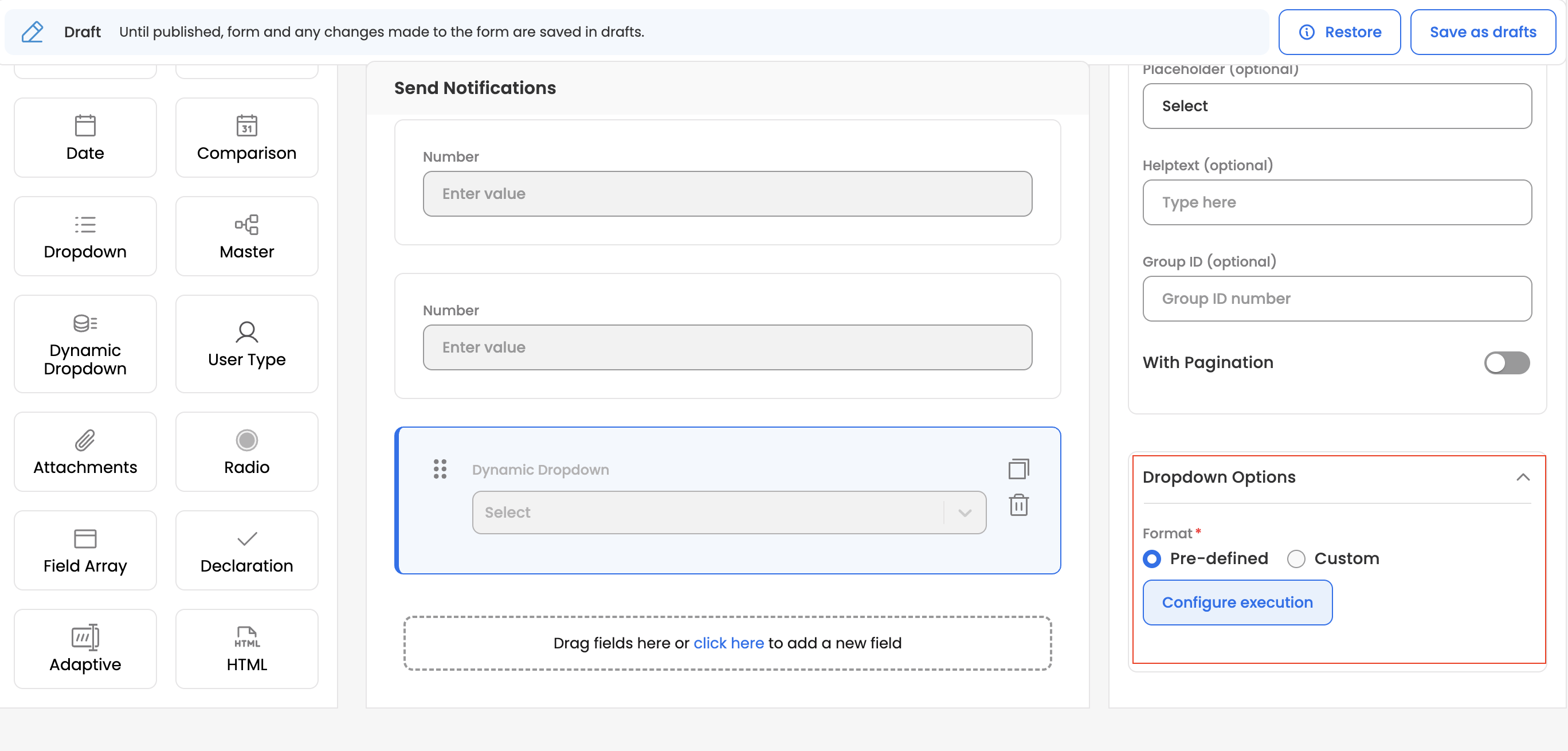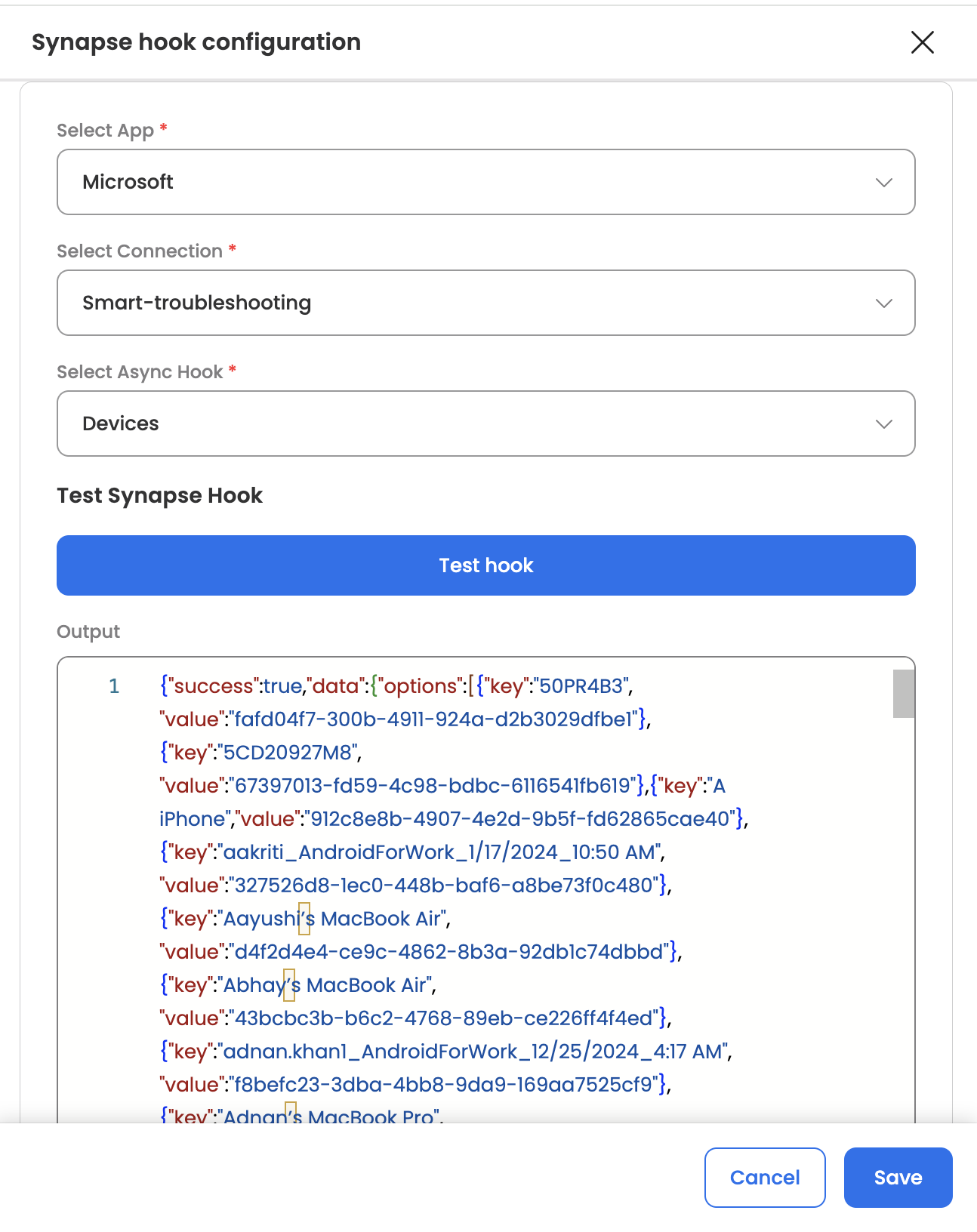Pre-defined dynamic dropdown
A significant enhancement to our form-building capabilities: the Dynamic Dropdown component! This powerful new feature allows you to populate dropdown options in real-time by fetching data from third-party applications. Say goodbye to stale, manually updated lists and hello to always-current, contextually relevant options for your users.
Dynamic Dropdowns not only fetch external data but also handle necessary data transformations for label-value mapping, support pagination, and allow for filtering, ensuring a seamless and efficient user experience, especially in integration-heavy workflows (e.g., showing relevant time-off types for an employee).
New Features & Enhancements
- Dynamic Dropdown Component:
-
A new form field type, "Dynamic Dropdown," is now available.
-
This component fetches options live from external sources when the form loads or when dependent filter values change.
-
Supports label-value mapping for displayed options.
-
Handles pagination for large datasets from the source API.
-
Allows for filtering of options based on configured parameters.

-
- Flexible Endpoint Configuration: When configuring a Dynamic Dropdown, you now have two primary options for setting up the data source (with a third planned for the future):
- Custom:
- Define a custom API endpoint to fetch dropdown options.
- Configure support for necessary filters to be passed to your custom API.
- Pre-defined:
- Select from a list of pre-configured connectors and their available data C.
- This simplifies integration with commonly used third-party applications.\
- (Coming Soon: Configuration via Workflows Utility)
- Custom:
- Detailed Configuration for Pre-defined Dynamic Dropdowns: If you choose the "Pre-defined" option, you'll be guided through the following setup:
- App Name: Select the relevant application name from your Synapse connections.
- Select Connector: Choose the specific connector associated with the selected app.
- Select Dropdown: Pick the type of dropdown data you want to fetch (e.g., "Time-off type," "User List," "Department List").
- Associated Configurations (Filters/Parameters): Define the parameters or filters required by the selected pre-defined dropdown. You can pass values from:
-
User Parameters: Dynamically use attributes of the logged-in user.
-
Form Fields: Use values from other fields on the current form as input.
-
Static Text: Input fixed values.
-
This configuration leverages the Data Center Layout (see below) for easy mapping of dynamic values.

-
- Integrated Testing Capability:
- Easily test your Dynamic Dropdown configuration directly within the form builder.
- The "Test" option allows you to:
- Input static values for any configured filters or parameters.
- View the results (the options that would be fetched) based on your test inputs.
- A "Save" option is provided to store your Dynamic Dropdown configurations once you're satisfied.
- Enhanced Data Center Layout for Dynamic Values:
- The Data Center layout can now be used to populate dynamic values for your Dynamic Dropdown configurations conveniently (and other applicable areas).
- The layout is segmented for clarity:
- Initiator Details: Access data like User ID, Employee ID, Email ID, Location, Designation, Department.
- Assignee Details: Access data like User ID, Employee ID, Email ID, Location, Designation, Department.
- Form Details: Access values from all other fields present in the current form.
- When a dynamic key is selected, its full path (e.g., initiator.email, form.fieldName) will be shown for easy reference.
Key Benefits
- Real-time Data: Ensure dropdown options are always up-to-date by fetching them live.
- Improved User Experience: Provide users with relevant and contextual choices, reducing errors and frustration.
- Reduced Manual Effort: Eliminate the need to create manually and maintain static option lists for data that exists in other systems.
- Seamless Integration: Easily connect your workflows to third-party applications for data retrieval.
- Increased Flexibility: Configure dropdowns with either custom APIs or pre-defined connectors to suit various integration needs.
Important Notes
- The "Workflows utility" option for configuring Dynamic Dropdown endpoints is planned for a future release.
- Performance of Dynamic Dropdowns will depend on the responsiveness of the configured external API endpoints. Ensure your endpoints are optimised for quick responses.
Updated about 1 month ago
